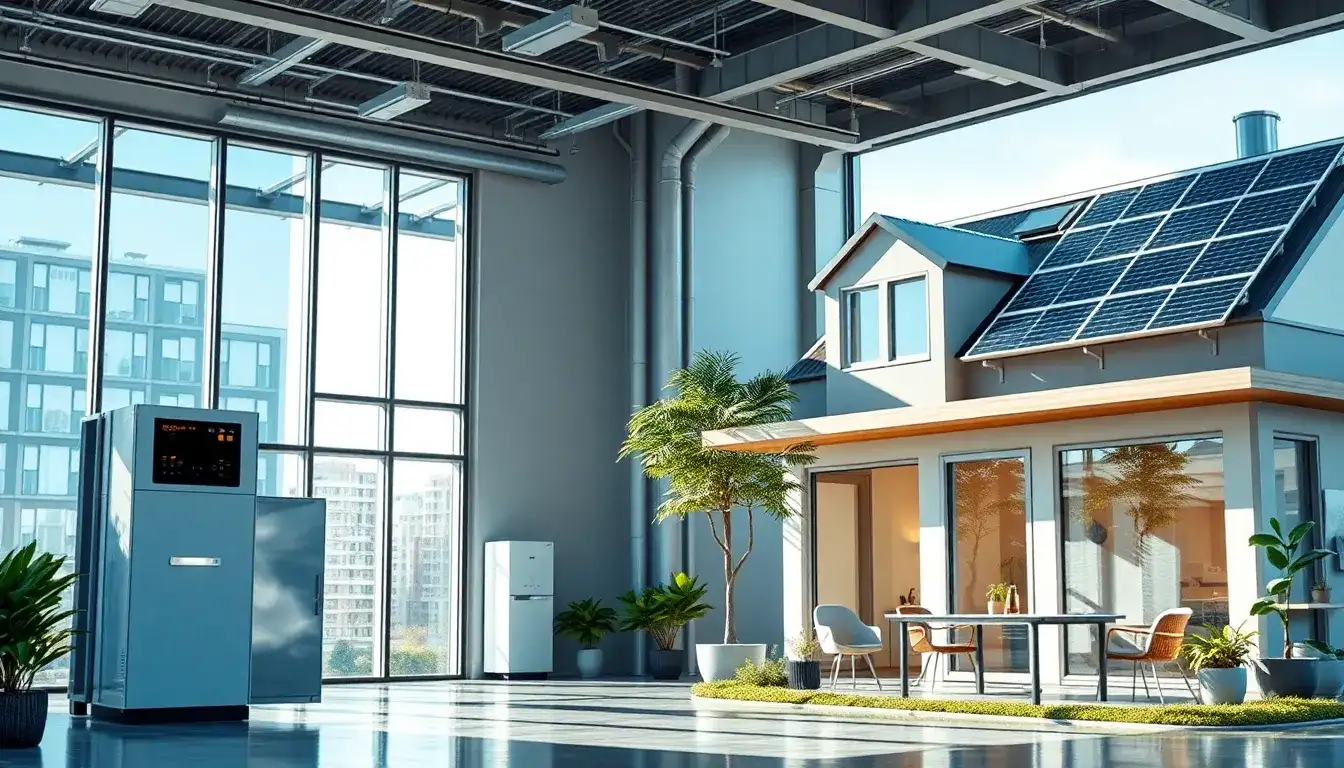
Energy Storage Devices Empowering the Energy Revolution: Efficient Solutions for Commercial and Residential Systems
As the global energy transition accelerates, energy storage devices are becoming a core component in constructing a sustainable energy system. From commercial complexes to residential homes, and from grid regulation to off-grid applications, storage technologies provide intelligent and efficient pathways for energy management through functionalities such as “peak shaving,” “green energy absorption,” and “emergency backup.” This article will focus on three key scenarios of energy storage devices—commercial energy storage systems, residential energy storage systems, and emerging technology trends—analyzing how they are reshaping energy usage patterns.
Commercial Energy Storage Systems: Revolutionizing Energy Efficiency in Industrial and Business Settings
Commercial energy storage systems optimize electricity dispatch, helping businesses reduce operational costs and enhance energy reliability. For example, a commercial complex in Hangzhou configured distributed intelligent storage cabinets, integrated with an intelligent energy management system, achieving a 20% to 30% reduction in electricity expenses while ensuring continuous power supply for critical loads during grid failures. These systems are particularly suited for the following scenarios:
- Peak and Valley Price Arbitrage: In areas with significant price differences, commercial storage can charge during low-rate periods and discharge during peak hours, directly lowering electricity costs.
- Power Assurance and Stability: In environments like data centers and hospitals where continuous power supply is crucial, energy storage systems can provide backup power with millisecond response times to avoid outages.
- Green Energy Absorption: When combined with solar power plants, storage devices can store excess electricity, reducing the phenomenon of wasted solar and wind energy and improving the utilization of renewable resources.
The technological advantages of commercial storage include modular design and intelligent scheduling. For instance, Huawei’s cloud lithium system utilizes features like “cloud boosting” and “cloud peak shifting,” enabling deployment without rewiring and flexible scalability, thereby lowering initial investment thresholds. Additionally, the integration of new technologies such as flow batteries and sodium-ion batteries enhances system safety and longevity.
Residential Energy Storage Systems: A New Choice for Household Energy Independence
With the widespread adoption of distributed photovoltaics, residential energy storage systems have become central to household energy management. For example, farmers in Shenqiu County, Zhoukou City, Henan Province, have adopted a “photovoltaic + storage” model, overcoming limitations on grid capacity by generating electricity during the day for storage and self-supply at night, leading to an average daily electricity cost savings of about 30%. The core values of these systems include:
- Electricity Cost Optimization: By utilizing a “self-generated, surplus electricity online” model, households can reduce reliance on the grid, particularly during high-price periods, when the storage system can release low-cost stored energy.
- Emergency Backup Power: During extreme weather or grid failures, storage devices can ensure basic household electricity needs, such as lighting, refrigeration, and medical equipment.
- Environmental Sustainability: When paired with solar panels, residential energy storage systems can lower household carbon emissions and promote green lifestyles.
Technologically, residential energy storage systems are trending toward miniaturization and smart features. For instance, the Shenzhen Huazhang project employs an integrated “photovoltaic-storage-charging” solution, managing photovoltaic generation, storage, and charging stations to cover all household energy needs. Furthermore, the use of phase change storage materials can regulate indoor temperatures, reducing air conditioning energy consumption and enhancing living comfort.
Technological Trends: Safety, Intelligence, and Diverse Development
Innovations in energy storage technology are driving the industry toward higher efficiency and lower costs:
- Long-duration Energy Storage Breakthroughs: New technologies such as liquid air storage and compressed air storage have achieved sustained discharges of over four hours, making them suitable for grid-level peak regulation. For instance, a 60-megawatt liquid air storage project can generate 185 million kilowatt-hours annually, reducing carbon dioxide emissions by 148,000 tons.
- Intelligent Management System Upgrades: Companies like Huawei Cloud Lithium and XieNeng Technology have launched intelligent Battery Management Systems (BMS) that optimize charge and discharge strategies using AI algorithms to enhance system lifespan and safety.
- Environmental Protection and Circular Economy: The use of sodium-ion and lithium iron phosphate batteries reduces dependence on rare metals, while battery recycling technologies, such as Green Li-ion’s hydrometallurgical process, promote resource circularity.
Policy and Market Dual-Driven Growth
Global policies continue to bolster the energy storage industry. A joint action plan released by eight Chinese departments aims to exceed 70 million kilowatts of new energy storage capacity by 2025. Meanwhile, the North American and European markets are accelerating the commercialization of storage technologies through subsidies and carbon tax policies. In terms of market demand, global energy storage installations are projected to reach 52 gigawatts in 2024, with lithium-ion batteries accounting for over 97% of this total, indicating robust growth potential in the industry.
The proliferation of energy storage devices is reshaping energy consumption patterns: in commercial settings, they serve as cost-reducing and efficiency-enhancing “power managers”; in residential contexts, they act as energy-independent “green hubs.” With technological advancements and supportive policies, the energy storage industry is set to accelerate its integration into a comprehensive “source-grid-load-storage” ecosystem, providing crucial support for global carbon neutrality goals.







